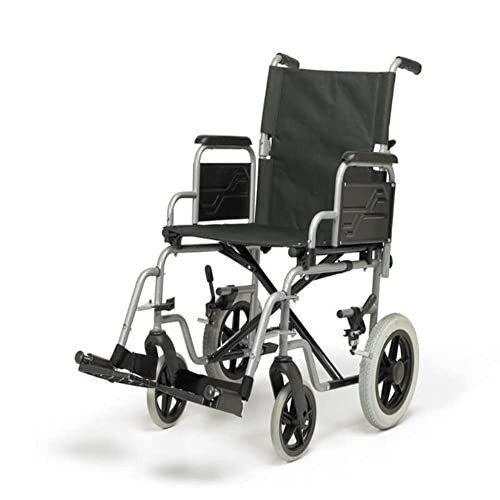The 9 Things Your Parents Taught You About Mobility Scooters

Navigating the World of Mobility Scooters: A Comprehensive Guide
In a period where mobility is progressively recognized as a basic element of quality of life, the need for assistive devices has actually risen. Amongst these, mobility scooters stand apart as a flexible and empowering choice for people with mobility challenges. This extensive guide looks into the world of mobility scooters, using insights into their types, advantages, buying factors to consider, and upkeep suggestions.
Understanding Mobility Scooters
Mobility scooters are motorized lorries created to help individuals with mobility problems in moving around more freely and separately. They are especially advantageous for those who find walking challenging due to conditions such as arthritis, multiple sclerosis, or post-surgical recovery. Unlike manual wheelchairs, mobility scooters need minimal physical effort, making them an excellent choice for extended use.
Types of Mobility Scooters
Three-Wheel Scooters
- Pros: More maneuverable, lighter, and simpler to save.
- Cons: Less steady on rough terrain.
- Best For: Indoor and smooth outside surfaces.
Four-Wheel Scooters
- Pros: More steady, much better on rough terrain, and can bring much heavier loads.
- Cons: Bulkier and less maneuverable.
- Best For: Outdoor usage, specifically in parks and on unequal surfaces.
Portable Scooters
- Pros: Lightweight, collapsible, and easy to transportation.
- Cons: Limited range and speed.
- Best For: Travel and periodic use.
Heavy-Duty Scooters
- Pros: Built to deal with much heavier users and rugged environments.
- Cons: More pricey and less portable.
- Best For: Users over 300 pounds or those who require to browse rough surface.
Standing Scooters
- Pros: Provide a standing position, which can be beneficial for users who can not sit for long durations.
- Cons: Limited stability and variety.
- Best For: Users who prefer standing and need short-distance support.
Benefits of Mobility Scooters
Improved Independence
- Mobility scooters allow users to take a trip longer distances without fatigue, enabling them to take part more totally in day-to-day activities and social occasions.
Improved Safety
- With functions like safety belt, anti-tip wheels, and brake systems, mobility scooters use a much safer option to manual wheelchairs and walking help.
Convenience and Support
- Adjustable seats, back-rests, and armrests make sure a comfortable ride, lowering the pressure on the user's body.
Cost-efficient
- While the preliminary investment can be substantial, mobility scooters are typically more economical in the long run compared to regular taxi rides or specialized transport services.
Social Inclusion
- Mobility scooters facilitate greater social interaction by enabling users to engage in community activities and preserve a more active lifestyle.
Aspects to Consider When Buying a Mobility Scooter
User Needs and Abilities
- Assess the user's physical condition, mobility needs, and day-to-day activities to identify the most ideal kind of scooter.
Size and Weight Capacity
- Ensure the scooter can accommodate the user's size and weight conveniently and securely.
Variety and Speed
- Think about the typical range and speed required for daily use. Some scooters have a series of up to 30 miles on a single charge.
Mobility
- If travel is a top priority, choose for a portable scooter that can be quickly disassembled and transferred.
Upkeep and Support
- Pick a respectable manufacturer that provides reputable client service and maintenance support.
Spending plan
- Set a budget and check out options that use the very best worth for cash. Think about financing options and possible insurance coverage.
Upkeep Tips for Mobility Scooters
Regular Cleaning
- Tidy the scooter frequently to prevent dirt and particles from affecting its efficiency. Utilize a soft fabric and moderate detergent.
Battery Maintenance
- Follow the producer's standards for battery charging and upkeep. Frequently check the battery level and prevent deep discharges.
Tire Inspection
- Examine the tires for wear and appropriate inflation. Replace or repair as needed to ensure a smooth and safe trip.
Lubrication
- Lube moving parts such as the chain and equipments to reduce friction and prevent wear.
Expert Servicing
- Arrange regular expert servicing to address any concerns and guarantee the scooter remains in optimal condition.
Frequently Asked Questions About Mobility Scooters
Are mobility scooters covered by insurance coverage?
- Some insurance strategies, including Medicare, might cover the cost of mobility scooters under certain conditions. Consult your service provider for particular information.
Can I utilize a mobility scooter inside your home?
- Yes, many mobility scooters are created for both indoor and outdoor use. Guarantee the scooter is suitable for the kind of surface areas you will be navigating.
How fast can mobility scooters go?
- The speed differs by design, however most mobility scooters have a maximum speed of 4 to 8 miles per hour.
Do I need a license to run a mobility scooter?

- In many countries, a license is not required to run a mobility scooter. However, it is crucial to follow local guidelines and traffic laws.
Can I travel with a mobility scooter?
- Lots of mobility scooters are designed to be portable and can be dismantled for travel. Consult airline companies and transport companies for particular requirements.
Mobility scooters are a transformative tool for individuals with mobility difficulties, using a mix of independence, safety, and convenience. By comprehending the various kinds of scooters, thinking about essential acquiring factors, and following upkeep best practices, users can maximize their mobility scooter and lead a more active and fulfilling life. Whether for daily commutes or leisurely outings, a well-chosen mobility scooter can be a valuable companion on the journey to enhanced mobility and lifestyle.



